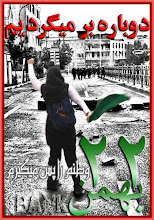Jerwood Contemporary Makers, (JCM), opened on June 4th and runs until July 13th at the Jerwood Space, 171 Union St. London SE1. It replaces the Jerwood Applied Arts Prize, (1995-2007).
Introduction
JCM is the first in a series of three such events, which I assume will run annually. Seven makers were selected, given £30,000.00 and asked to ‘run with it,’ possibly not the wisest advice to offer under the circumstances but you get the picture. The point
is they could produce whatever they wanted in six months and they agreed to work with the idea of touch as the starting point to the work. The panel of selectors were Edmund de Waal, who chaired the process, Amanda Game, Director of IC: Innovative Craft, based in Edinburgh, and Love Jonsson, School of Design and Crafts, University of Gothenburg, Sweden. He and Edmund de Waal are also members of Think Tank, which you can read about elsewhere on this blog. De Waal opened the show with a brief explanation of the process set out above and further conversation clarified the following: selection for the show is the prize; there is no race for the single, star winner. The purpose is to create optimum conditions in which a selection of makers have the opportunity to produce their best ever and, in so doing, create an exhibition which might be seen a cross section of contemporary craft practice at its most exciting, most experimental. Seven makers couldn’t be expected to exemplify craft practice in its entirety but it will be interesting to see the final result after the third such event.
Theme
Touch, you might think, is a problematic beginning and, interpreted literally, it would be. Arguably it’s one of Craft’s orthodoxies but it’s such a broad term, particularly by the time you’ve included the metaphorical interpretations, that it feels (sic) more like a truism in this context, which in turn raises the question ‘why bother at all?’ But bother they did and it didn’t seem to hinder.
Gary Breeze: Lettering
My first encounter was with six enormous wooden beams, each carved with strange looking words I couldn’t quite read. Skirting round them for a while I alighted on one, someone singing to his lover, or would be lover, which drew me into the other words until I put together some disjointed lines of a song or poem, something like rhyming left-overs, all about the sea and love and loss and big stately sailing ships. These were the work of Gary Breeze, taxonomically named on the invitation with the single word ‘lettering’. It’s a bit like describing Carol-Anne Duffy as ‘typist.’ Lets just say it doesn’t quite tell the whole story, but then again, shows just how intensely poetic ‘lettering’ might be. These tattered shreds of song, carved so carefully and properly and evenly into the oak beams, (they have a proper nautical name which I’ve forgotten), direct you to the next work, carved in slates, placed on the wall. Here the collections of carefully ‘lettered’ words, again all related to matters nautical, hang together at times, producing some suggestively raunchy narrative before falling apart into separate words again, missing each other, looking for meaning. The not-touch was almost more touching than the touch in this work. Yearning. Yeah, I did love it. The beams were called Drynautica and the slates, ‘Sea Shanties’.
Nicholas Rena: Ceramics
I wandered off into another room full of metal things and some tapestries and then to another with a vast, IN YER FACE, selection of Nick Rena’s ‘big juggy things’. These, ‘The Ecstasy of St. Teresa’ were a turbo-charged Nick Rena production. Magenta, lemon yellow, lime green, pillar box red and other acidic, toxic colours assailed you and shone. The waxed, acrylic-surfaced objects were warm to touch, inviting and smooooooooooth. They looked and felt like plastic but much too hard. They suggested formica: a very post-soviet café in Prague, but no, that wasn’t it either. Furniture, ships funnels, fog horn sounds. And what’s all this ecstasy? St. Teresa of Avilar, whose ecstasy we are invited to contemplate here, is attributed with an intensely sexualised description of an encounter with an angel, ‘who left me all on fire with a great love of God. The pain was so great, that it made me moan,’ etc etc, I’ll spare you the rest. Rena once told me that he considered contemporary ceramicists to be ‘like monks in a scriptorium’ which gets even more interesting in the light of his cheerful reply to a question once posed by De Waal: ‘Do you write?’ (this at a conference somewhere, sometime), ‘Yes,’ says Rena, ‘I once wrote a pornographic novel.’
I don’t know what goes on in Rena’s scriptorium but it’s clearly not what I had originally envisaged when he made this comment. The title and therefore the narrative, historical and poetic context offered to the viewer seems to produce an absolute and irreconcilable disjuncture with the plasticy, very straight edged, sharp cornered, faultlessly realised objects, which are made using industrial mould-cast methods and look like they’re made that way. The result is that industrial perfection blooms into a much more voluptuous perfection. I didn’t start moaning, but you never know…
Some thoughts on textiles
I don’t seem to be very interested in textiles, at least I didn’t respond to these. The thing is, when you consider, say, Nina Edge’s batiks, which were shown at the Arnolfini gallery in the ‘Circular Dance’ show in 1992, surely the precursor to Yinka Shonibare’s (vastly more celebrated) batik work - spot the gendering of this? Nina’s a woman, (of Indian origin), – right so she’s just doing what comes ‘naturally’ then, whereas Yinka’s a man - Ooooaah, well that makes it really interesting - Let's shortlist him for the Turner prize. Where was I ? Yes, when you consider Edge’s work, (pictures will be provided soon, I promise), or those searing embroidered protests by Chilean and Palestinian women in the early 1980s, or the achingly expressive Aids Quilts of similar times, you have to wonder what has happened. Textile craft seems to have gone backwards. I suspect that some textile work really has been fully integrated in mainstream art production; as if to prove the point, here’s a link to Edge's latest work. Now, in its effort to become respectable 'fiber art,' I suggest that textile craft, has dissipated its energy and become not art, but instead acquired the modernist reserve of masculinity. DISCUSS! Ok, that can be your homework for the next seven weeks. Call it a holiday project. I’ll give you a clue though. Take a look, a few posts earlier, at X-hibitionism: Lulu Allison’s quilts and Doris Domestic’s / Wendy Haslam’s ‘Boudoir’, these still have some that earlier zest. How come they’re exhibiting in a shed in Stoke Newington? A shed it may have been, but it did engage with contemporary art concerns and was recieved as such, partly because of the shed. They wanted a 'dirty' space. I don’t know where that leaves textile work in terms of the craft enclave, but it may mean that textile craft is going to seem lacking in energy, or just overly self referential or stuck in its materiality rather than the material being a liberating force.
Metal work and Jewellery
Two makers, one billed as ‘Jewellery, one ‘Metal’. Also not my thing. I dont do jewellery of any sort unless it’s cheap beads from the post office next to Shadwell tube. So, I think it's better not to attempt a comment; we’ll move on, and my profound apologies to Lin Chung, whose jewellery is ably and illuminatingly commented upon in the Jerwood catalogue by A C Grayling. There's a beautiful essay on Sara Brennan's tapestries by painter Moyna Flannigan, and another on the textile works of Deirdre Nelson by Jessica Hemmings from Winchester School of Art. Craft writer Lesley Jackson discusses Drummond Masterton's work in fascinting digi-detail. All the work deserves a good, long, uninterrupted look. Dont be put off by my ingorance of these particular crafts.
Clare Twomey
So, I’d done the rounds, I thought, and was wondering what had happened to Clare Twomey’s work, when, drifting back into Drynautica’s room, looking for my lover lost at sea, I saw some feint scrapings, weird looking scribbles, emerging out of a wall somewhere on the horizon. This turned out to be Witness, one of the happiest co-habitations of titles I’ve ever encountered. Witness was a white clay wall, which was why I hadn’t noticed it in the white cube gallery space and it was Clare Twomey’s work. The scribbles were beginning to reveal a darker under-layer which turned out to be gold. As the evening progressed more and more of the white clay over-layer was scratched into and smudged and brushed away until it became a haze of scrawls and words. She has relinquished more control to the audience than she usually does and the audience responded, but hesitantly.
I assume she chose white clay to merge with gallery space, and it worked perfectly. It had the resonance of a wall prepared for fresco: the mix of gold and white dust coming off the walls and its finesse gave it that ‘quiet’ and slightly historicised feeling, but the audience were disobedient, or too obedient, depending on how you look at it. Here is the problem of what is, in essence, a graffiti wall in a private, hushed, gallery space. Graffiti, by contrast, is loud and rude and public.
I was part of a graffiti group once, (see Spray It Loud by Jill Posner). We concentrated on adverts, which isn’t the same thing as a blank wall, but you still daub your message and run. You certainly don’t hang about and see if it looks good which is what happened in the gallery. It will be interesting see if, by the end of the run, it has become a gallery drawing, rather than a graffiti wall, which may well have been the idea. At the time, I really wanted to take it somewhere else. I was making notes later on the train to Hull, and as we slid out of Selby, I spotted an abandoned industrial area, brick-built in about 1900 I would guess. Sunlit and backed by slate-grey clouds, surrounded by angry green fields it looked just the right place. Small ex-industrial towns a full of angry disaffected youth who can be rude and loud or full of poetry and pathos. A collection of this kind of scrawling intervention would have been a wonderful drawing and the gold would have twinkled in the sunlight which would have allowed it to be precious and surprising with impunity. ('Precious' is forbidden in craft circles along with flowers and anything that might be feminine, unless it's ironic, then it's ok.) Ah yes, but this is Selby. Yorkshire. It’ll rain, and the clay’ll slide off the walls, but it was an interesting thought for a while. Witness is a great idea, possibly in not quite the right place, but time will tell better than I can. You have until July 13th. Then it goes to Edinburgh in the Autumn.
Afterword: fostering the frisson
Just one other thing to consider. July 13th isn’t long. Media coverage is scant and there’s no race to excite journalists. How is the Jerwood going to find an audience and generate excitement? How will it avoid being an exercise in establishment back-scratching? You can’t apply to be selected, you just wait and then you forget. Given that there is going to be little response from mainstream media channels to JCM, it is even more important than usual that the various communities of makers stay interested. Listening to the opening speeches, the excitement of those involved was palpable. Refusing the singular beauty parade is a genuinely interesting risk to have taken, but The C Word has encountered much disaffection, and good intention of the sort which ends up as, ‘oh damn, I really did mean to go.’ So, how can the interest and therefore the engagement and support of makers be sustained in this enterprise? The selection process, at the moment, relies on the selectors knowing about a wide range of makers with established track records of one sort or another, but you can’t always know who can produce something astounding just by looking at their track record; it may simply be evidence of useful patronage, or even a well-off family who can help sustain a career through the difficult bits. More importantly, an apparently uneventful career may just be evidence of children, elderly parents, someone needing to be cared for, an absolute absence of additional resources to draw on, and so on. The process at the moment excludes surprise, and surprise is a very good way of sustaining interest. One possible route to surprise is to invite proposals. What would you do with your 30 thousand? Tell us in 300 words and a couple of pictures / diagrams, something like that. There is no perfect solution and this one had the advantage of being efficient and productive, not wasting endless hours and money on middle managers and unnecessary process, but I suspect it may need some variation, some element of risk, to sustain the necessary frisson.
Sunday, 15 June 2008
Subscribe to:
Comments (Atom)











































